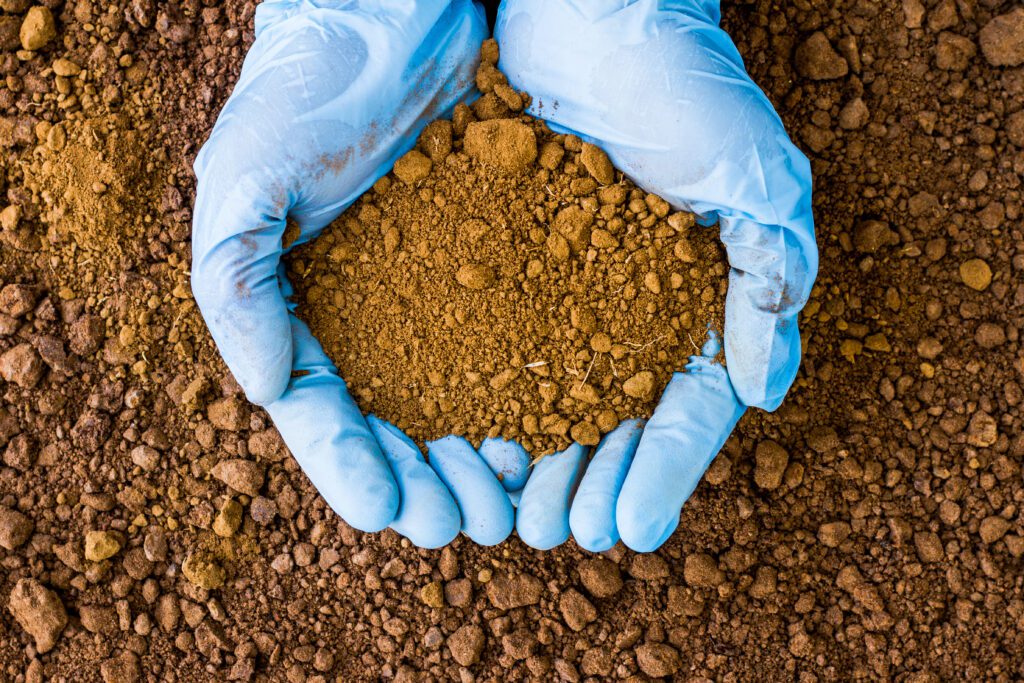Regardless of what building you are constructing, a concrete foundation is among the first things you will do to establish building integrity. But what happens when that foundation is built on unstable soils?
Unstable soils are an often overlooked but significant building hazard that can lead to disastrous consequences for construction and the future of any building. Here’s what you need to know.
Types of Unstable Soil and How They Affect Your Building
Unstable soil can occur before, during, and after a building is constructed. It’s important (and often required) for building projects to have soil testing done before construction begins in order to avoid some of the more immediate issues. But unstable soils may happen at a later point as well if your foundation isn’t supported properly.
These different issues in the soil, whether natural geological occurrences or issues of construction, can impact the foundation’s concrete integrity, putting the entire infrastructure at risk. Here are some of the most common causes of unstable soil and how they can affect your new construction or long-standing building:
Poor Soil Compaction
Soil compaction is when the individual particles of soil are pressed more tightly together, leaving less space between them in which soil can compress or move around. In gardening, compact soil is a bad thing as it creates less space for roots to grow. In construction, you want your soil to be nice and compact to reduce the risk of sinking foundations and structural damage to your building!
Poor soil compaction can result from a variety of soil properties, such as:
- High clay content
- Low pH
- High levels of sodium
- Too much moisture
In addition to these natural properties in the soil, poor soil compaction can result from improper construction equipment or techniques to compact the soil before starting the project.
Erosion
Erosion is when natural materials—like those that compose soil—are worn away due to shifts in the earth’s crust. These shifts are caused by natural events such as wind and water, but also by human actions like deforestation and agricultural activities. Soil that has been frequently displaced by erosion inherently becomes unstable, leading to hazardous occurrences like landslides and sinkholes that can be serious building hazards if they happen under or near your structure.
Freezing and Thawing
Changing temperatures can have a large impact on the stability of the soil. Frozen soil will be harder, but as it thaws it can loosen and shift, especially if suddenly under new weight since its last freeze/thaw cycle, like a new construction. On the other hand, when soil freezes, the water particles expand which can create fissures and cracks through the soil and rocks that can even break apart building structures. As these cycles of freezing and thawing continue, the soil will become more and more unstable, causing a building’s integrity to decrease over time.
Decomposition of Organic Materials
Organic materials within the soil may decompose over time. Since the soil formed around these existing organic materials, when they break down and decrease in mass, the soil will shift to fill in the gaps. This is another cause of sinking buildings and foundations, as the soil itself is sinking and compacting down around the new space. Soils with high concentrations of organic materials such as plant residue, fungus, bacteria, and many single-cell organisms are at a greater risk of being destabilized by decomposition.
How to Protect Your Building from Unstable Soils
Since soil is naturally at the foundation of every building’s, well, foundation, you’d be hard-pressed to avoid all possibilities of unstable soil. However, there are steps you can take beyond initial soil testing to improve concrete integrity and reduce the possibility of building hazards like sinking concrete slabs or cracks forming.
Polyjacking is a method of concrete leveling and repair that actually improves soil stability! Unlike mudjacking, which injects a mixture of soils and concrete beneath foundations that add a lot of weight and just press down on top of the existing soil, polyjacking uses a lightweight and adaptable polyurethane foam to fill in the gaps under concrete slabs and within the soil itself.
How Polyjacking Protects Your Building Integrity
As the polyurethane foam is injected under the concrete, it flows through all the nooks and crannies before expanding and solidifying into an immovable, impermeable substance that holds foundations and the underlying soils in place, preventing future sinking or cracking from many of the soil issues mentioned above!
In addition to addressing existing concrete problems from unstable soils, polyjacking can be done with preventative deep injection for new construction projects! Just contact us at Pro Polyjacking for all your concrete needs, and we’ll make sure your soil remains stable—permanently.
